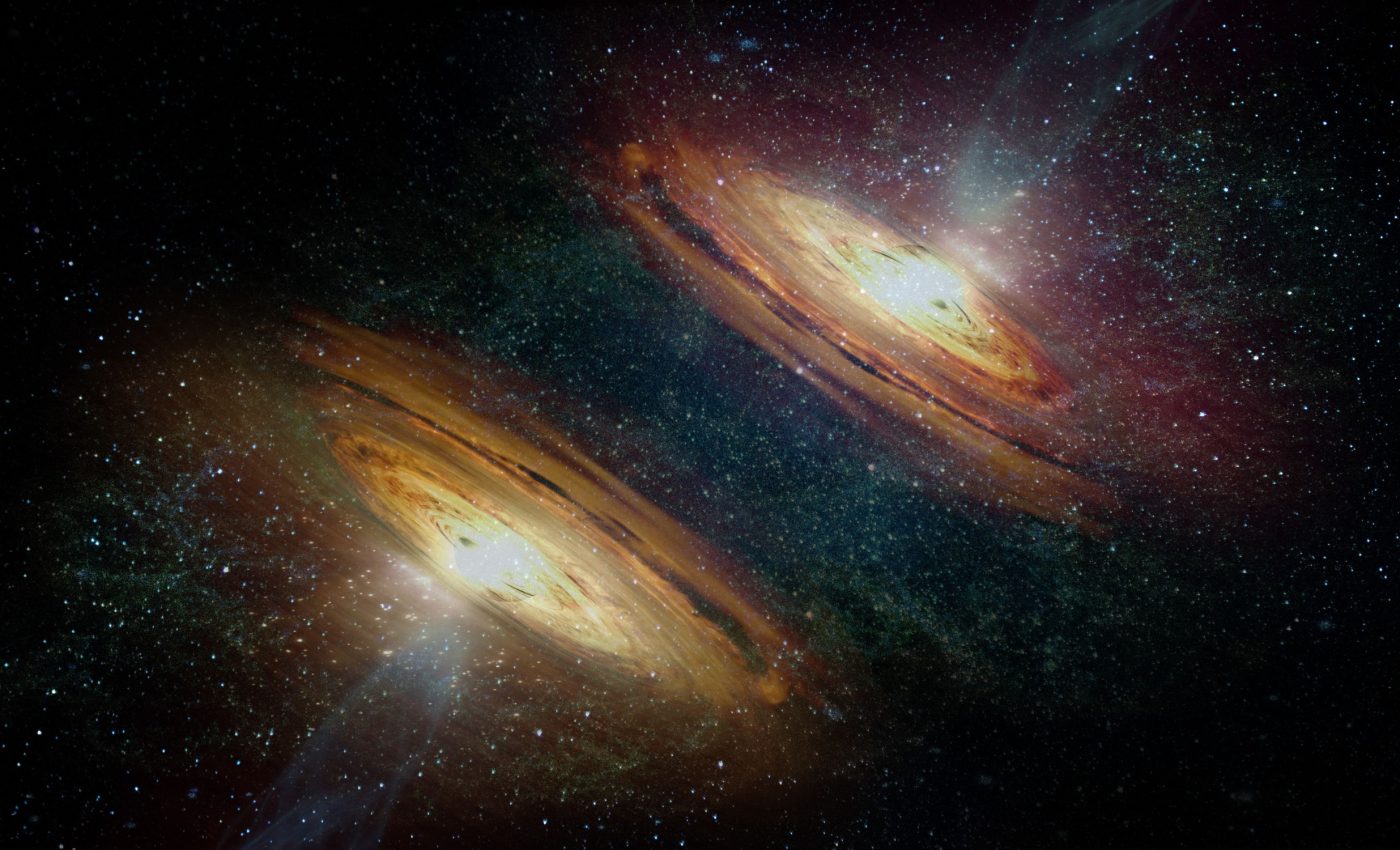
Wild discovery: Twin stars with parallel disks and jets
Twin stars have emerged from the hidden realms of the universe, where the building blocks of stars are only visible in wavelengths beyond the human eye’s reach.
Recently, astronomers made an unexpected discovery using two powerful telescopes, revealing twin disks and jets erupting from young stars in a multiple star system.
This discovery – notable for the age, size, and chemical makeup of the stars, disks, and jets – is particularly thrilling due to its location in a well-studied part of the universe.
What are twin stars?
Twin stars, also known as binary stars, are two stars that orbit around a common center of mass. This system is bound by their mutual gravitational attraction. Binary star systems can vary widely in their characteristics, with the stars differing in size, brightness, and distance from each other.
There are several types of binary stars, including visual binaries, where the two stars can be seen separately through a telescope, and spectroscopic binaries, where the stars are too close to be distinguished visually but can be identified through their spectral lines.
These systems are important in astronomy because they allow scientists to calculate stellar masses, which are crucial for understanding star formation and evolution.
Additionally, the study of binary stars provides insights into the dynamics of stellar interactions and the processes leading to phenomena such as supernovae or the formation of neutron stars and black holes. Twin stars thus play a vital role in advancing our knowledge of the universe.
Twin star discovery
In this remarkable research, astronomers utilized the U.S. National Science Foundation‘s Atacama Large Millimeter/submillimeter Array (ALMA) and NASA’s James Webb Space Telescope’s (JWST) Mid-Infrared Instrument (MIRI). These telescopes observe different parts of the electromagnetic spectrum.
Combining their observations allowed the discovery of twin stars hidden in radio and infrared wavelengths within WL20. This star system is located in the nearby rho Ophiuchi molecular cloud complex, over 400 light-years away from Earth.
“What we discovered was absolutely wild,” said astronomer Mary Barsony. “We’ve known about star system WL20 for a long time. But what caught our attention is that one of the stars in the system appeared much younger than the rest.”
“Using MIRI and ALMA together, we actually saw that this one star was two stars right next to each other. Each of these stars was surrounded by a disk, and each disk was emitting jets parallel to the other.”
Disks and jets uncovered
ALMA detected the disks, while MIRI revealed the jets. Study co-author Valentin J.M. Le Gouellec of NASA-ARC retrieved and analyzed ALMA archival data, revealing the disks’ composition.
ALMA’s high-resolution observations of the disks surrounding the newly observed twin stars revealed their structure.
Lukasz Tychoniec of Leiden Observatory provided high-resolution images, showing the disks’ massive size – approximately 100 times the distance between Earth and the Sun.
Martijn L. van Gelder provided additional resources to process the data collected by MIRI, uncovering the chemical makeup of the jets.
“So if it weren’t for MIRI, we wouldn’t even know that these jets existed, which is amazing,” said Barsony.
“Someone looking at this ALMA data not knowing there were twin jets would think, oh, it’s a large edge-on disk with a central hole, instead of two edge-on disks and two jets. That’s pretty remarkable.”
A fortunate accident
Another remarkable aspect of this discovery is the chance it had to occur. “A lot of the research about binary protostars focuses on a few nearby star-forming regions,” said Michael Ressler, a scientist from JPL.
“I had been awarded some observing time with JWST and decided to study binaries in the Perseus star-forming region.”
“However, I had been studying WL20, which is in the rho Ophiuchus region in nearly the opposite part of the sky, for nearly 30 years, and I thought, ‘why not sneak it in? I’m never going to get another chance, even if it doesn’t quite fit with the others.’ We had a very fortunate accident with what we found, and the results are stunning.”
New insights into star formation
While twin stars are not a new phenomenon, the recent discovery of twin disks and jets in the young star system WL20 is unique. It reveals unprecedented details about the formation processes of such systems.
This discovery is significant because it involves observing the early stages of star formation with high-resolution data, showing parallel disks and jets.
By combining multi-wavelength data from ALMA and JWST, these new findings illuminate the complex processes involved in the formation of multiple star systems.
The astronomers plan to utilize ALMA’s future upgraded capabilities, such as the Wideband Sensitivity Upgrade, to continue unraveling the mysteries surrounding the birth of stars and planetary systems.
—–
Like what you read? Subscribe to our newsletter for engaging articles, exclusive content, and the latest updates.
Check us out on EarthSnap, a free app brought to you by Eric Ralls and Earth.com.
—–













